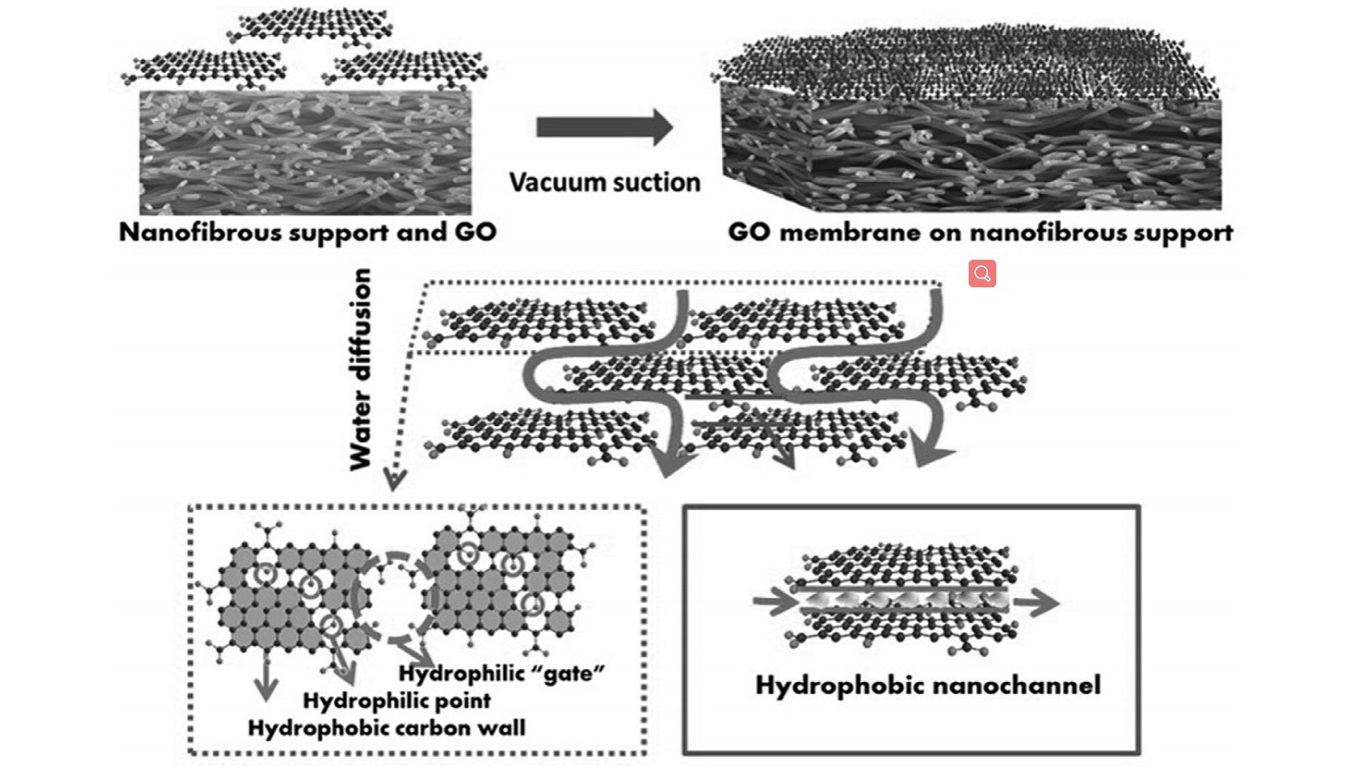GO has attracted the interest of many researchers for fabricating novel separation membranes owing to their smoothness, atomic thickness, good hydrophilicity, and tunable nanochannels or nanopores. However, GO membranes really show poor stability in water, especially fabricated on highly porous nanofibrous support. Pan and his group first synthesized GO nanosheets with large lateral size (>200 mm) by a newly developed method and successfully assembled them on a highly porous nanofibrous mat using the vacuum suction method. As shown in Figure, the nanochannels, formed by the interlayer spacing between adjacent GO nanosheets, enabled an ultrafast water permeability, which is claimed to stem from a quickly passing hydrophilic “gate” (edges of GO nanosheets or defects in the GO) for aggregation and the fast slip flow along the atomically smooth and hydrophobic carbon walls. Moreover, the GO TFNC membranes showed high rejection performance (nearly 100% rejection of Congo red and 56.7% for Na2SO4).


